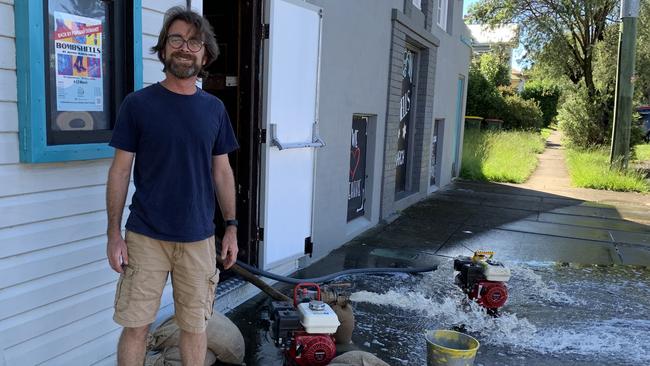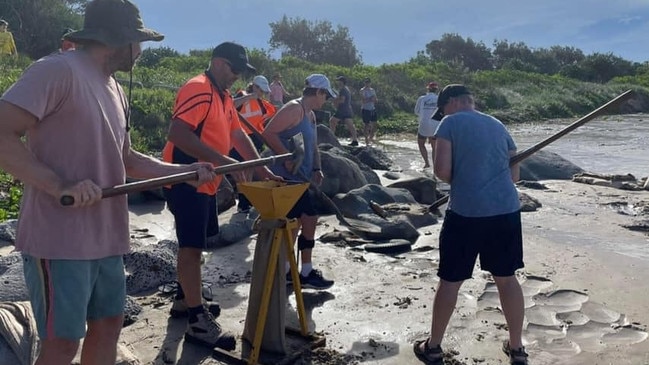New developments and relocations: What are the options for river towns?
A new report shows that by 2030 one northern NSW town will be virtually 100 per cent uninsurable against flooding, with a number of others deemed high risk. See the full list.

Regional News
Don't miss out on the headlines from Regional News. Followed categories will be added to My News.
The riverside town of Grafton in New South Wales is the only Australian town with a one hundred per cent risk of becoming uninsurable to riverine flooding, according to a new report.
It was closely followed by the northern NSW townships of Chinderah, Ballina and West Ballina.
The Going Under Report, released by a group of companies under the Climate Risk Group, looked at the risk of damage from riverine flooding in Australia to residential homes by 2030.
The report analysed close to fifteen million addresses in fifteen thousand suburbs across Australia.
According to the report, by 2030 588,857 (or 21 one per cent) of Australian homes will ‘have exposure to some level of riverine flooding’ with NSW by far the most impacted.
An Insurance Council of Australia spokesperson responded to the report findings stating the current risk to 230,000 Australian properties is a five per cent risk “of catastrophic flooding each year”.

“More than half of these (123,475) are in New South Wales, with the bulk of the remainder in Queensland and Victoria,” said the spokesperson.
In NSW, 206,622 individual homes were identified as being at high risk of becoming uninsurable by 2030. This compares with 382,235 homes in all other states put together.
While the Climate Council’s Nicki Hutley told The Daily Telegraph the report findings were a reflection of updated climate science, the University of NSW (UNSW)’s Climate Research Centre Professor Andrew Pitman disagrees.
“The science behind this report isn’t robust but that doesn’t mean there aren’t risks from climate change and an imperative to act according to climate science risk.” he said.
Relocations and new developments: what options do river towns have?
Grafton’s Clarence Valley Council Councillor Greg Clancy told The Daily Telegraph that options for towns like Grafton, built when the river was used for transport, include relocation.
“In recent times in Grafton there have been housing developments approved at Junction Hill and they are all way above flood level,” he said.
While these are an option for river towns like Grafton with existing residences, Mr Clancy raised concerns about new developments in flood prone areas such as a controversial application for a $48 million 284 lot subdivision at Mile Street in Yamba.
The Going Under Report predicts the seaside holiday village, which was completely cut off during the floods in 2022, has a 56.63 per cent risk of becoming uninsurable by 2030.

This concerns Mr Clancy who personally opposed the “flood plain development” application which is currently being determined by the Northern Regional Planning Panel, which assesses and determines regionally significant development applications.
“Basically, the developers would be creating islands, so the new houses are going to be on fill but will get cut off, ” he said.
A spokesperson from the Insurance Council of Australia said that “in December 2022, National Cabinet tasked planning ministers to develop a national standard for considering disaster and climate risk and declaration that “the days of developing on flood plains need to end”.
“The ICA strongly supports the decision and has long been calling for governments to commit to stopping development in areas of high flood risk and commence work on planning reform with appropriate risk mitigation on flood plains,” the spokesperson said.
They encourage customers to shop around for insurance and making sure they have an insurance product to suit their needs.
Elsewhere the Federal Emergency Management Minister Murray Watt told the Daily Telegraph that the government is investing $1 billion into the Disaster Ready Fund to mitigate for disaster.
“We are investing in hundreds of projects around the country, putting downward pressure on insurance premiums.
“Moving forward, we will be continuing to work with jurisdictions to make sure that resilience is a core element of recovery, as well as being a central part of government investment in disaster mitigation,” he said.


